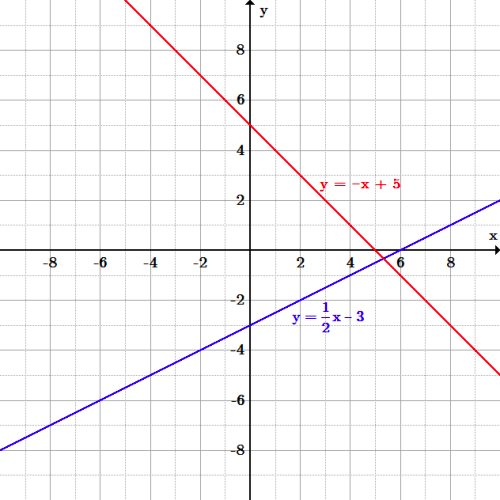

In slope-intercept form, the equation is y = 2 x – 3. The equation for this line is y + 3 = 2 x. A positive slope indicates that the values on both axes are increasing from left to right. Lines that tend in this direction have positive slope. Notice that the direction of the line in the graph below is from bottom left to top right. However, distance is usually expressed as a positive number, so most graphs of this relationship will only show points in the first quadrant. In this equation, for any given steady rate, the relationship between distance and time will be linear. What Does a Linear Equation Look Like? Example 1: distance = rate × time For example, the problem may not make sense for negative numbers (say, if the independent variable is time) or very large numbers (say, numbers over 100 if the dependent variable is grade in class). However, it is important to remember that not every point on the line that the equation describes will necessarily be a solution to the problem that the equation describes. The graphs of linear equations are always lines. All other points on the line will provide values for x and y that satisfy the equation. So graphing a linear equation in fact only requires finding two pairs of values and drawing a line through the points they describe. Students should already know that any two points determine a line. You can then plot the points named by each ( x, y) pair on a coordinate grid. When you assign a value to the independent variable, x, you can compute the value of the dependent variable, y. In other words, for every value of x, there is only one corresponding value of y. Whether or not it's labeled x, the independent variable is usually plotted along the horizontal axis. In this case, x is the independent variable, and y depends on it, so y is called the dependent variable. The graph of a linear equation is a straight line.Ī linear equation in two variables can be described as a linear relationship between x and y, that is, two variables in which the value of one of them (usually y) depends on the value of the other one (usually x).

Then it offers lesson ideas for introducing and developing the concept of linear equations in one variable to your students. This article explains what a linear equation is and walks through different examples.

This topic integrates ideas about algebra, geometry, and functions and can be difficult for many children-and adults!-to wrap their heads around. ICLE (International Center for Leadership in Education)Ĭustomer Service & Technical Support Portalįor many students in Grades 8 and up, the numbers and shapes they've learned about really start to come together when they are making and solving linear equations. Into Algebra 1, Geometry, Algebra 2, 8-12 Science & Engineering Leveled Readers, K-5


 0 kommentar(er)
0 kommentar(er)
